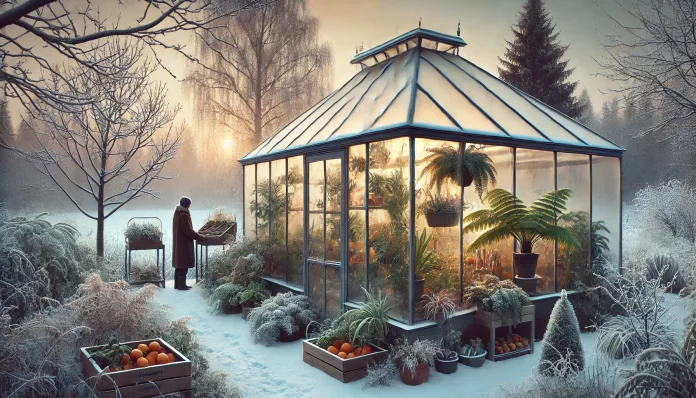A greenhouse can be a game-changer for any gardener, especially during the winter months. It provides a warm, protected environment for overwintering tender plants, starting seeds early, and even growing crops year-round. But with so many options available, it can be overwhelming to choose the right greenhouse for your garden. Here, we explore five excellent winter greenhouse options for hobbyist gardeners, along with their features and benefits.
1. Cold Frames: Compact and Practical
A cold frame is a simple, low-cost option perfect for gardeners with limited space. Typically made from a wooden or metal frame with a glass or polycarbonate lid, cold frames trap heat and protect plants from frost.
Ideal For:
- Overwintering young plants and seedlings.
- Extending the growing season for salads and herbs.
- Acting as a mini-greenhouse for small gardens.
Benefits:
- Affordable and easy to assemble.
- Portable and space-efficient.
- Low maintenance.
Considerations:
Cold frames don’t offer much height, so they’re best for low-growing crops.
2. Lean-To Greenhouses: Efficient and Versatile
Lean-to greenhouses are designed to attach to an existing wall, making them ideal for smaller gardens. The wall provides structural support and absorbs heat during the day, releasing it at night to keep the greenhouse warm.
Ideal For:
- Overwintering delicate plants like geraniums or fuchsias.
- Growing a variety of crops in a compact space.
Benefits:
- Energy-efficient due to the heat-retaining wall.
- Easy to access from your home.
- Adds aesthetic value to your garden.
Considerations:
Ensure the attached wall gets enough sunlight and is structurally sound.
3. Freestanding Glass Greenhouses: The Classic Option
The traditional glass greenhouse remains a favorite for many gardeners. With its iconic design and excellent light transmission, it’s a versatile option for growing a wide range of plants.
Ideal For:
- Growing tender crops like tomatoes, peppers, and cucumbers.
- Overwintering tropical and exotic plants.
- Starting seeds early for the growing season.
Benefits:
- Maximum light penetration promotes healthy plant growth.
- Durable and long-lasting.
- Available in various sizes and styles.
Considerations:
Glass is heavy and can be fragile, so it requires a sturdy frame and careful maintenance.
4. Polycarbonate Greenhouses: Lightweight and Durable
Polycarbonate greenhouses have become increasingly popular due to their affordability and practicality. The panels are shatterproof and provide better insulation than glass, making them ideal for winter use.
Ideal For:
- Growing hardy vegetables and herbs year-round.
- Protecting tender plants from frost and wind.
Benefits:
- Lightweight and easy to install.
- Provides diffused light, reducing the risk of scorching.
- Excellent insulation for colder months.
Considerations:
Polycarbonate may yellow over time and doesn’t offer the same aesthetic appeal as glass.
5. Heated Greenhouses: For Serious Hobbyists
A heated greenhouse is the ultimate winter gardening solution. With temperature control and additional lighting options, it allows gardeners to grow tropical plants or propagate seeds regardless of the weather.
Ideal For:
- Growing exotic plants like orchids, bromeliads, and citrus trees.
- Propagating seeds and cuttings in winter.
Benefits:
- Year-round growing potential for a wide range of plants.
- Precise control over temperature and humidity.
- Allows for experimentation with plants requiring specific conditions.
Considerations:
Heated greenhouses are more expensive to run and require a reliable power source.
Key Considerations When Choosing a Winter Greenhouse
- Size and Space: Ensure the greenhouse fits your garden and meets your needs.
- Budget: Prices vary widely, so choose a greenhouse that balances quality with affordability.
- Location: Place your greenhouse where it gets maximum sunlight and is sheltered from strong winds.
- Materials: Consider the durability and insulation properties of glass, polycarbonate, or other materials.
- Ventilation: Good airflow is essential to prevent mold and maintain healthy plants.
Conclusion
Whether you’re a beginner or an experienced gardener, there’s a winter greenhouse to suit your needs. From compact cold frames to state-of-the-art heated greenhouses, these structures help you protect your plants, extend the growing season, and enjoy gardening even in the coldest months. By choosing the right greenhouse for your garden, you can make winter your most productive season yet.




